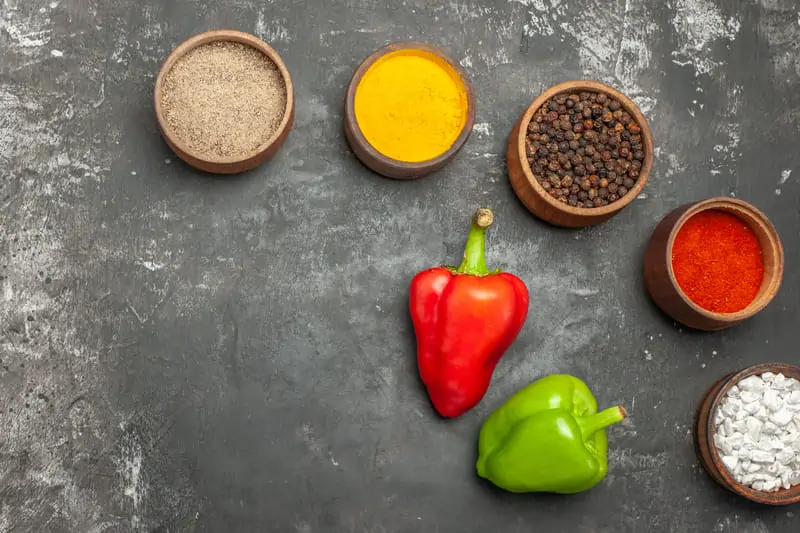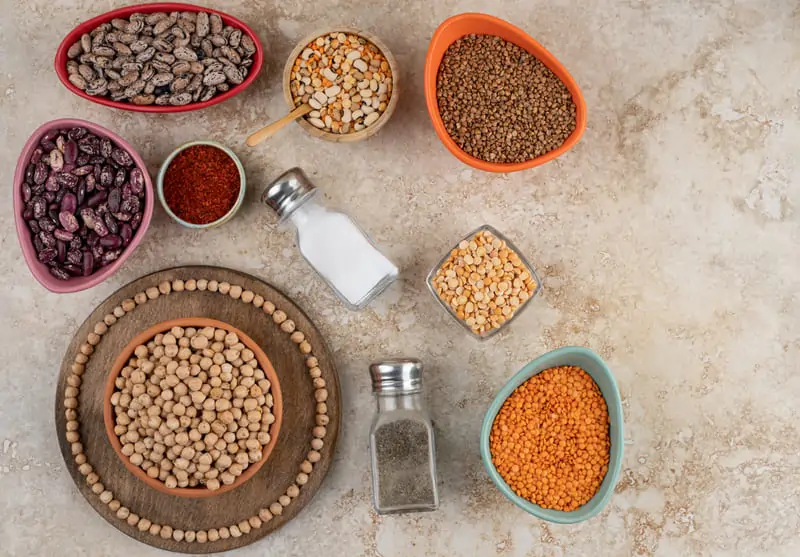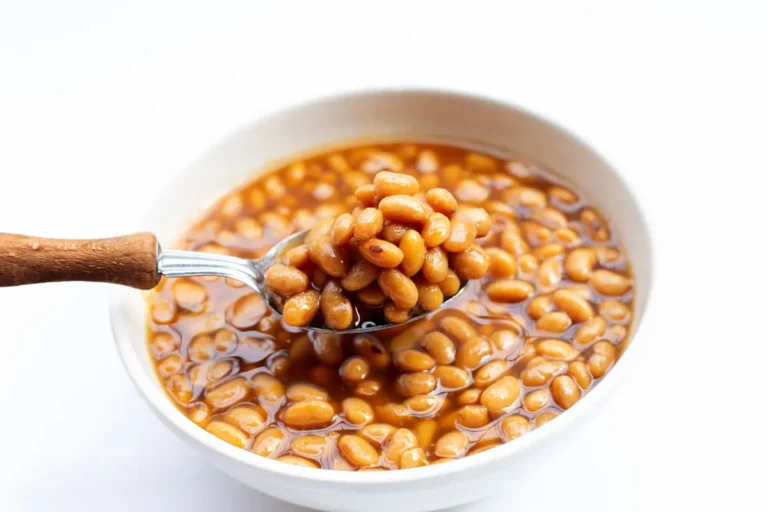White beans are a popular addition to chili, valued for their creamy texture and mild, adaptable flavor. They add richness and protein without overpowering the dish. However, there may be times when a substitute is needed—whether due to dietary restrictions, allergies, or simply running out of ingredients. Fortunately, there are several alternatives that can preserve the hearty, comforting essence of chili. From other legumes to vegetables and grains, the right substitute can not only fill the gap but even add a new dimension to your recipe.
Exploring the Need for White Bean Substitutes in Chili
There are various reasons why you might need an alternative to white beans:
- Dietary Needs: Some individuals avoid beans due to specific diets like low-carb or paleo.
- Allergies or Sensitivities: Bean allergies or sensitivities necessitate substitutes.
- Availability: Sometimes, white beans may not be available in your pantry or local store.
White beans, such as cannellini or navy beans, add creaminess and protein to chili. However, other ingredients can replicate these qualities effectively. For another comforting variation of chili, consider exploring this Read the Ultimate Guide to Vegan White Bean Chili.
Creative Veggie Options to Replace Beans in Chili

Chili Substitutes to Transform Your Recipe by Using vegetables as substitutes for white beans can transform your chili into a vibrant, nutrient-packed dish. These alternatives provide not only texture and flavor but also an opportunity to incorporate more vegetables into your diet:
- Cauliflower or Broccoli Florets:
- These vegetables are excellent for creating a chunky and hearty chili. Cauliflower absorbs the spices beautifully, while broccoli adds a slightly earthy flavor. Both options hold their shape well during cooking, making them ideal for replicating the bulk of beans.
- Zucchini or Butternut Squash:
- Zucchini introduces a tender texture and mild flavor, while butternut squash contributes a natural sweetness and creamy consistency when cooked. These vegetables work well in lighter chili variations, adding complexity without overpowering the dish.
- Sweet Peas or Carrots:
- Sweet peas add pops of vibrant green color and a mild sweetness that contrasts nicely with spicier elements. Carrots, whether diced or shredded, provide both a subtle crunch and a natural sweetness, enhancing the overall flavor profile.
For those looking to explore more creative Chili Substitutes and twists on comfort foods. By incorporating vegetables creatively, you can customize your chili to suit different tastes, dietary needs, or seasonal ingredients, ensuring a fresh and exciting meal every time.
Potato-Based Substitutes
Potatoes are a versatile and satisfying substitute for white beans, offering creaminess, density, and a variety of flavors to elevate your chili. Here’s how different types of potatoes can be used effectively:
- Russet Potatoes:
- Russet potatoes are known for their starchy quality, which provides a hearty and dense texture. When diced into small cubes and simmered, they soften beautifully, naturally thickening the chili as their starch is released. This makes them an excellent choice for creating a robust and filling dish.
- Yukon Gold Potatoes:
- Yukon Gold potatoes stand out for their buttery and slightly creamy taste. Their texture remains smooth and rich even after cooking, making them perfect for adding a luxurious element to your chili. They complement both mild and spicier recipes, enhancing the overall flavor.
- Sweet Potatoes:
- Sweet potatoes bring a natural sweetness that works particularly well in balancing spicier chili recipes. Their vibrant color adds visual appeal, and their creamy consistency creates a delightful contrast with bold spices. For best results, cube them and let them simmer until tender, allowing their sweetness to meld with the chili’s flavors.
Preparation Tips:
Dice the potatoes into evenly sized cubes to ensure uniform cooking. Simmer them in the chili until they are tender but not mushy. The starches released during cooking not only thicken the chili but also enhance its richness without the need for additional thickeners.
Grain-Based Substitutes to Add Bulk and Hearty Appeal
Grains are an excellent way to add bulk and texture to chili while maintaining its hearty and satisfying nature. They offer versatility, unique flavors, and additional nutrients, making them a great alternative to traditional beans.
- Quinoa:
- Quinoa is a protein-packed grain that absorbs flavors beautifully. Its slightly nutty taste complements the spices in chili, making it a fantastic substitute for beans. Quinoa also cooks quickly, which is ideal for those looking to prepare a fast yet wholesome meal. Stir it into the chili towards the end of cooking to retain its texture and avoid overcooking.
- Barley or Farro:
- Barley and farro are ideal for creating a chewy texture that mimics the heartiness of beans. These grains are particularly suited for robust chili recipes with bold spices, as they hold up well during extended simmering. Barley brings a slightly earthy flavor, while farro has a mild nuttiness that enhances the depth of the dish.
- Gluten-Free Options:
- For gluten-free alternatives, polenta or corn can be excellent choices. Polenta adds creaminess when cooked into the chili, while whole corn kernels provide a subtle crunch and sweetness. Both options work well in chili variations with lighter broths or Southwestern-style seasonings.
Cooking Tips:
Pre-cook grains like quinoa, barley, or farro to ensure they are tender and evenly cooked before adding them to the chili. For polenta, consider stirring it directly into the chili for a creamy texture or serving it on the side for a unique twist.
For more inspiration on using grains creatively. To complete your meal, consider pairing your chili with a creamy, grain-based dish or try our easy and foolproof banana bread recipe for a delicious contrast.
Legume Substitutes for a Protein-Packed Chili

Sticking within the legume family ensures a texture and nutritional profile similar to white beans while bringing unique flavors to your chili. These options are versatile and can adapt to a variety of spice levels and recipes:
- Chickpeas (Garbanzo Beans):
- Chickpeas retain their firmness even after cooking, adding a slightly chewy texture to the chili. Their nutty undertone pairs well with bold spices like cumin and chili powder, making them an excellent choice for recipes with a robust flavor profile. Chickpeas also bring a hearty bite, ensuring the dish feels satisfying and filling.
- Lentils:
- Lentils, whether brown, green, or red, are a versatile and quick-cooking option. Brown and green lentils hold their shape during cooking, adding texture and a subtle earthy flavor. Red lentils, on the other hand, break down and create a creamy consistency, perfect for thickening the chili naturally. Their adaptability allows them to work well in both mild and spicy recipes.
- Lima Beans or Black-Eyed Peas:
- Lima beans provide a buttery and slightly starchy quality that enhances the creaminess of white chili. Black-eyed peas, with their earthy and slightly sweet flavor, complement the spices typically used in chili, such as paprika and cayenne. Both options bring a unique twist to the dish while maintaining the hearty appeal of traditional chili.
Preparation Tips:
Rinse and drain canned legumes to reduce excess sodium and enhance their natural flavor. For dried legumes, soak and cook them in advance to ensure they are tender and ready to absorb the chili’s spices. Add them during the simmering phase to allow the flavors to meld perfectly.
For additional ideas on incorporating legumes into your meals, explore our guide on creative lentil recipes and learn about the nutritional benefits in dishes like lentil soup.

